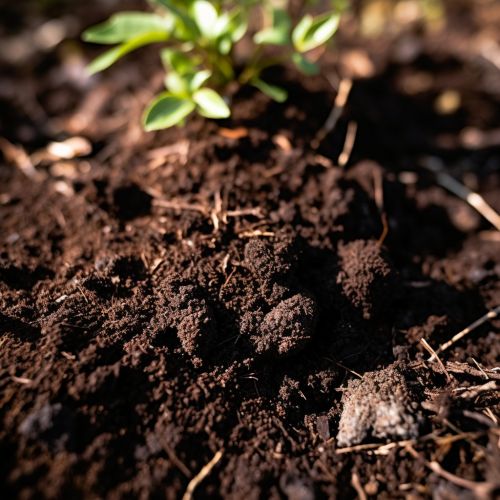Soil quality
Introduction
Soil quality, also known as soil health, is the capacity of soil to function as a vital living ecosystem that sustains plants, animals, and humans. This definition speaks to the importance of managing soils so they are sustainable for future generations. To do this, we need to remember that soil contains living organisms that when provided the right environment will keep the soil healthy and productive.
Soil Composition
Soil is primarily composed of minerals, organic matter, water and air. The composition and proportion of these components greatly influence the soil's ability to function and its overall quality. The mineral content of soil is derived from the parent material, while organic matter is derived from plant and animal material. Water and air occupy the spaces between the mineral and organic particles.


Soil Functions
Soil performs numerous essential functions, including nutrient cycling, water storage and purification, soil structure maintenance, and support for plant growth. These functions are crucial for sustaining life on earth. The quality of soil determines how well it can carry out these functions.
Nutrient Cycling
Soil plays a vital role in the nutrient cycle, where essential nutrients are transformed and made available to plants and other organisms. The quality of soil directly affects its ability to store and release nutrients.
Water Storage and Purification
Soil acts as a natural filter, purifying water as it percolates through the soil layers. High-quality soil can store more water, reducing the risk of flooding and drought.
Soil Structure Maintenance
Soil structure refers to the arrangement of soil particles into small clumps, called aggregates. A well-structured soil has a good balance of mineral particles, organic matter, and pores, allowing for adequate air and water movement.
Support for Plant Growth
Healthy soil provides a suitable environment for plant roots, offering physical support, air, water, temperature moderation, protection from toxins, and nutrient availability.
Soil Quality Indicators
Several indicators can be used to assess soil quality, including soil structure, soil pH, soil fertility, organic matter content, and the presence of soil organisms.
Soil Structure
The structure of soil is a key indicator of its quality. Well-structured soil has a crumbly texture, is easy to dig, allows water to infiltrate, holds moisture well, and has a strong capacity to store and supply nutrients to plants.
Soil pH
Soil pH is a measure of the acidity or alkalinity of soil. It affects the soil's ability to hold and supply nutrients to plants. Most plants prefer a slightly acidic to neutral pH, but some plants have specific pH requirements.
Soil Fertility
Soil fertility refers to the ability of soil to supply nutrients to plants. High-quality soil is rich in nutrients necessary for plant growth, such as nitrogen, phosphorus, and potassium.
Organic Matter Content
The amount of organic matter in soil is a crucial indicator of soil quality. Organic matter improves soil structure, retains moisture, provides nutrients, and fosters the growth of soil organisms.
Presence of Soil Organisms
Soil organisms, such as bacteria, fungi, and earthworms, play a vital role in maintaining soil health. They help decompose organic matter, improving soil structure and nutrient availability.
Improving Soil Quality
Improving soil quality involves practices that build organic matter, reduce soil erosion, and maintain nutrient and pH levels. These practices include crop rotation, cover cropping, organic amendments, and conservation tillage.
Crop Rotation
Crop rotation involves growing different types of crops in the same area in sequential seasons. It helps to improve soil structure, increase soil fertility, and break the life cycle of pests.
Cover Cropping
Cover cropping is the practice of growing crops primarily for the benefit of the soil rather than the crop yield. Cover crops can improve soil structure, add organic matter, and protect the soil surface from erosion.
Organic Amendments
Organic amendments, such as compost and manure, can be added to soil to improve its structure and add nutrients.
Conservation Tillage
Conservation tillage is a method of soil cultivation that leaves the previous year's crop residue on fields before and after planting the next crop. It helps to reduce soil erosion and water loss.
Conclusion
Soil quality is a critical factor in the health and productivity of ecosystems. By understanding the composition, function, and indicators of soil quality, we can better manage and improve the health of our soils, ensuring their sustainability for future generations.
